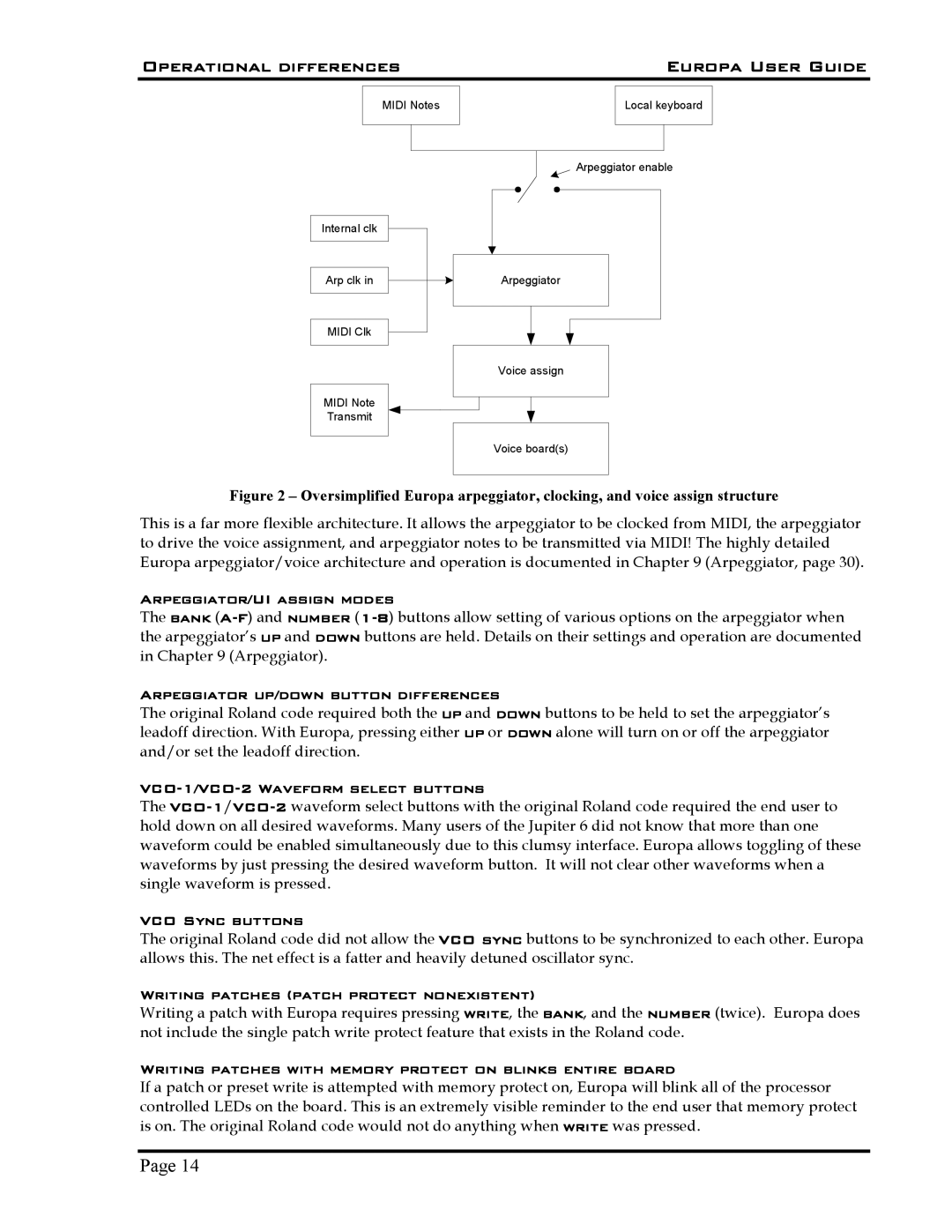
Operational differences | Europa User Guide |
MIDI Notes
Local keyboard
Internal clk
Arp clk in
MIDI Clk
MIDI Note
Transmit
Arpeggiator enable
Arpeggiator |
Voice assign
Voice board(s)
Figure 2 – Oversimplified Europa arpeggiator, clocking, and voice assign structure
This is a far more flexible architecture. It allows the arpeggiator to be clocked from MIDI, the arpeggiator to drive the voice assignment, and arpeggiator notes to be transmitted via MIDI! The highly detailed Europa arpeggiator/voice architecture and operation is documented in Chapter 9 (Arpeggiator, page 30).
Arpeggiator/UI assign modes
The bank
Arpeggiator up/down button differences
The original Roland code required both the up and down buttons to be held to set the arpeggiator’s leadoff direction. With Europa, pressing either up or down alone will turn on or off the arpeggiator and/or set the leadoff direction.
The
VCO Sync buttons
The original Roland code did not allow the VCO sync buttons to be synchronized to each other. Europa allows this. The net effect is a fatter and heavily detuned oscillator sync.
Writing patches (patch protect nonexistent)
Writing a patch with Europa requires pressing write, the bank, and the number (twice). Europa does not include the single patch write protect feature that exists in the Roland code.
Writing patches with memory protect on blinks entire board
If a patch or preset write is attempted with memory protect on, Europa will blink all of the processor controlled LEDs on the board. This is an extremely visible reminder to the end user that memory protect is on. The original Roland code would not do anything when write was pressed.
Page 14
